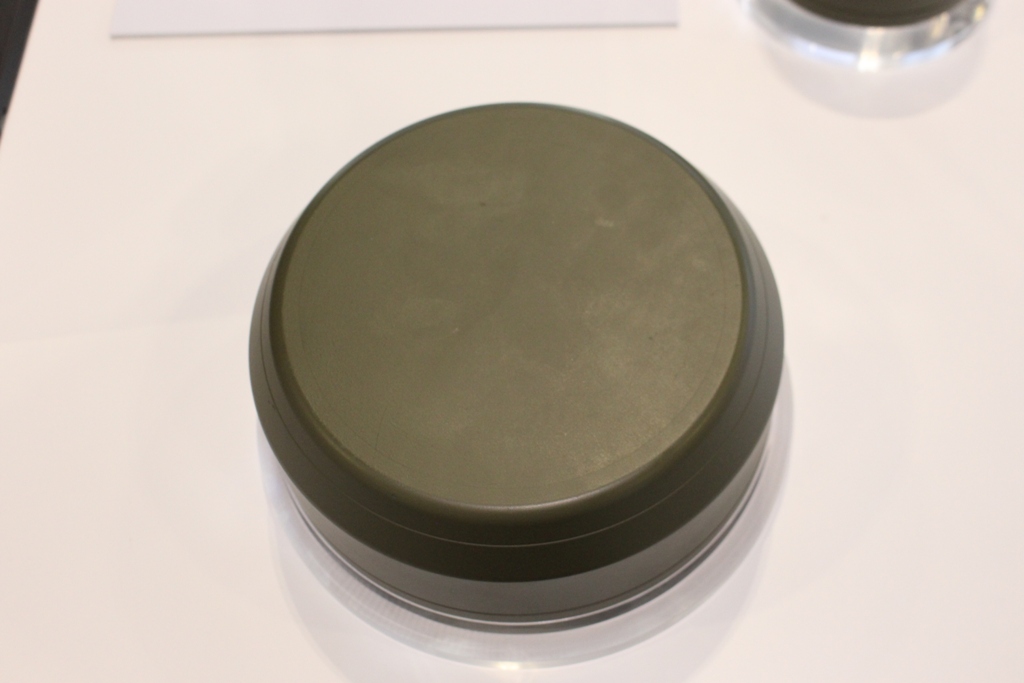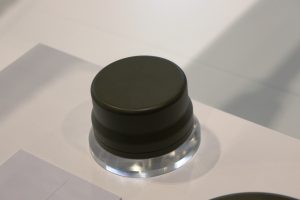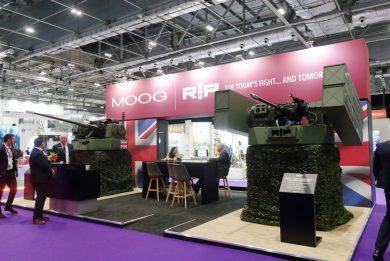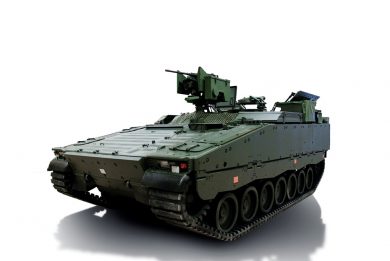
DSEI 2025 – Raytheon UK, new contracts and new simulation tools
In recent times, Raytheon UK, the Harlow-headquartered company, received a major contract for providing GPS anti-jam antennas for CV90 armoured vehicles, while new simulation tools allow it to shorten development times
Raytheon UK has been awarded a contract by BAE Systems to supply its Landshield Plus anti-jam antennas for the CV90 infantry fighting vehicle. According to a press release dated 15 September, the system is expected to be delivered between 2025 and 2029.
At DSEI UK 2025, EDR On-Line had the opportunity to speak with Alex Rose-Parfitt, Engineering Director at Raytheon UK and Jon Anderson, Head of Requirements and Capabilities – Advanced Products, who confirmed that Raytheon UK had been working with BAE Systems’ Hägglunds business for the past 12 months, undergoing assessments and trials before being selected for the contract.

Raytheon’s Landshield Plus includes a seven-element antenna and an anti-jam processor in a singular unit. The sensor provides the user with data concerning interfering signals and the location of the signal. The Landshield Plus operates on L1 and L2 GPS frequency bands, as well as Galileo E1 (OS). Additionally, it can defend against up to 6 jammers (Broadband, Narrowband, Swept, Pulsed, Spectrally Matched) simultaneously in both the GPS L1 and L2 frequency bands.Additionally, Landshield Plus can block signals from up to six jammers simultaneously across both frequency bands. A key factor in the design of both systems was their ease of integration, ensuring that the end-user could integrate the anti-jamming technology into its network seamlessly.

Landshield Plus uses a low SWaP (size, weight, and power) design, with a mass of 2.95 kg , a198 mm diameter and a 70 mm height. The anti-jam antenna operates from a 28-volt DC supply with a power consumption of 18 watts. Both Landshield and Landshield Plus are compatible with a variety of platforms, including fixed-wing and rotary-wing platforms, UAV/UAS and autonomous ground vehicles. The Landshield variants can identify the direction, type, and characteristics of jamming sources, feeding this information back to the user in real-time.
During the discussion, the Raytheon UK team discussed how the company works with the end user to integrate user feedback and anticipate future changes, ensuring that the system can stay ahead of the ever-evolving threats.
Additionally, Raytheon UK credited its continual participation in NAVFEST (originally named JAMFEST). An event which provides “low-cost, realistic, Global Positioning System (GPS) Electromagnetic Warfare (EW) scenarios to test GPS-based navigation and alternate navigation systems as well as train personnel in unique GPS-denied environments.”

Landshield Plus, and the original four-element antenna variant, Landshield, are both International Traffic in Arms Regulations (ITAR) free products, as they are “all UK engineering, all UK manufacturing” according to Rose-Parfitt.
Production and the Technical Demonstrator Programme (TDP)
Raytheon UK has many facilities throughout the UK. Two of its primary manufacturing facilities are in Glenrothes, Scotland, where over 700 employees are based, and a secondary facility in Livingston, established in 2020, which spans over 12,000 m2.
Engineering Director, Alex Rose-Parfitt, discussed the transformative role of digital engineering within the past few years stating that the level of sophistication within the models has enabled Raytheon UK for the past five years to create a digital representation of the product in such a realistic manner that hardware can be implemented and tested in such a way that the system believes it is actually in use. This enables engineers to evaluate various components, seekers, or sensors to understand how a particular unit would perform under different situations. The result is that engineers can understand the capabilities of the product earlier on in the process, rapidly decreasing the product timeline and reducing the number of assumptions made during the traditional manufacturing process.
Moreover, Rose-Parfitt stressed the importance of digital engineering in enhancing the end-user experience, as the customer is able to see model simulations of the product, ensuring that it perfectly suits the customer’s requirements.
Raytheon UK’s Technical Demonstrator Programme (TDP) uses digital engineering technology to not only enable earlier testing in model environments but also earlier validation of the product. The simulative process enables Raytheon UK to provide a more comprehensive body of evidence for certification authorities. In the July 2025 press release, it was stated that TDP can limit risks in future projects by enabling Raytheon UK to “implement processes that enhance overall project execution”.
According to Kings, Raytheon UK ensures the resiliency of its supply chain by conducting regular audits and assessments to ensure the survival of the partnership. Currently, RTX, which includes Collins Aerospace, Pratt & Whitney, and Raytheon UK, has over 6,000 domestic suppliers, helping to support the UK economy.
Raytheon UK currently exports over £ 250 million worth of product from Scotland to the US, with this expected to rise to £ 500 million by 2030. As Simon Kings, Business Development and Strategy Director, emphasised, this not only reinforces the UK’s role as a critical supplier to allied forces but also supports US efforts to expand its defensive capabilities. At the same time, Raytheon UK is investing in sovereign defence solutions and advanced training programmes, such as its submariner training for the Royal Navy’s Dreadnought-class. Together, these initiatives highlight the company’s dual focus: strengthening the UK’s industrial base while equipping both domestic and allied forces.
Photos courtesy Raytheon UK and A. Haywood



